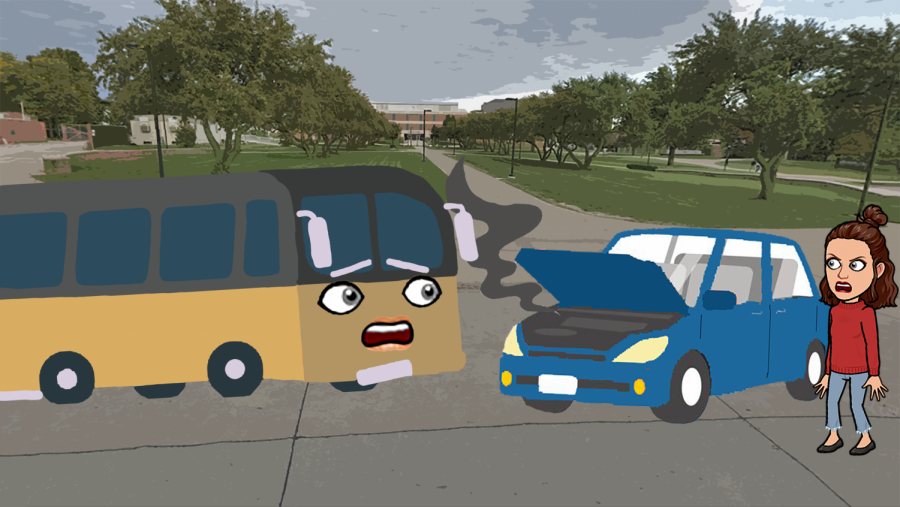The life and times of the bus that drove itself into a car
The Oakland University autonomous bus is dead. Its life was short and bright right until the violent end. Let us celebrate its memory.
The EasyMile EZ10 autonomous shuttle — affectionately called “Simon” by those close to it — came to the OU School of Engineering and Computer Science (SECS) over the summer of 2019.
“It was a really great day,” engineering student Monroe Lawson said, lovingly gazing off in the distance. “Simon showed up in a crate as a bunch of parts, and there was a bit of time setting Simon up, but it was not all bad. The whole team kinda got together and bonded as we set up Simon.”
The goal of Simon’s time at OU was to collect data on autonomous performance over six months. Simon would run rain or shine, sleet and snow, day and night. Continental brought the bus, and Auburn Hills set up rectangular black signs to allow Simon to navigate the rough streets between the Engineering Center and its surrounding parking lots.
But when Simon was all assembled, Simon was not 100% ready to go.
“We had a lot to sort out with Simon,” engineering student Janice Wolflowder said. “Simon was a really expense piece of equipment, so we had to make sure they were in tip-top shape before we let people on! If the ducks were not quacking in key, you do not let them into your pond!”
By hook, crook and loving labor Simon was finally ready. The EZ10 was unleashed into the wild, free to travel on the route hardwired into its silicon brain. For a while it looked as though things were going well for the autonomous project.
“It was really up and up on the Simon side,” engineering student and former emergency brake operator Blake ReMont said. “We were riding fast and high, soaring through the streets and burning up the asphalt with technology, my guy.”
It should be noted that the EZ10 can only achieve a top speed of around 25 mph.
Despite the SECS’s optimism, reactions to the bus around campus were mixed.
“You know, I am really not feeling this self-driving Tesla bus thing,” OU commuter Peter Lemat said. “Like, I get that it is the future and all that is cool, but this Tesla block is gonna get in the way. And no steering wheel? Really? Who would ever want to drive or ride or do anything around a 10-ton bus that does not even have a steering wheel? Like, what?”
For some time, there was little conflict between the drivers and auto-riders of OU. While they shared the same roads, there were no major incidents aside from premature shutdowns and email complaints about Simon being “too slow.”
But then, like a vengeful hawk plunging toward a helpless vole, fate struck Simon down.
“Heck yeah, I did it,” Lemat said. “I backed right into that bus. If they are going to roll that slow cube around town it better have the sense to back down. Any AI that does not swerve when ‘sike!’ is called is not fit to be AI.”
Since joining the big bus route in the sky, Simon has been kept out of the spotlight. While funeral services were held within the Engineering Center behind closed doors, the SECS opted to leave up the black rectangle guidance signs in Simon’s loving memory.
“While the autonomous bus is no longer in service, the signs serve as a memory of what was and what could have been,” an SECS spokesperson said.



